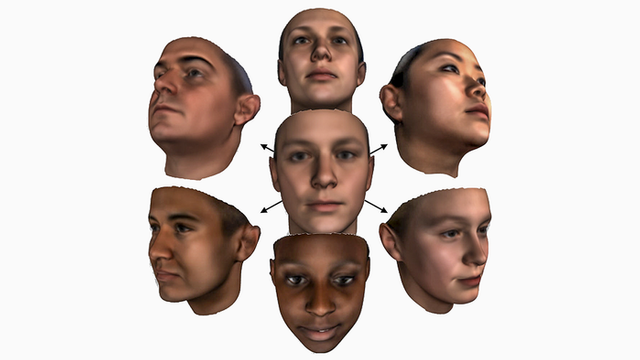Computer scientists have created the most accurate digital model of a human face. Here’s what it can do

From Science Magazine
If you’ve used the smartphone application Snapchat, you may have turned a photo of yourself into a disco bear or melded your face with someone else’s. Now, a group of researchers has created the most advanced technique yet for building 3D facial models on the computer. The system could improve personalized avatars in video games, facial recognition for security, and—of course—Snapchat filters.Read more: http://www.sciencemag.org/news/2017/05/computer-scientists-have-created-most-accurate-digital-model-human-face-here-s-what-itWhen computers process faces, they sometimes rely on a so-called 3D morphable model (3DMM). The model represents an average face, but also contains information on common patterns of deviation from that average. For example, if you have a long nose, you’re also likely to have a long chin. Given such correlations, a computer can then characterize your unique face not by storing every point in a 3D scan, but by listing just a couple hundred numbers describing your deviation from an average face, including parameters that roughly correspond to age, gender, and length of face.
There’s a catch, however. To account for all the ways faces can vary, a 3DMM needs to integrate information on many faces. Until now that has required scanning lots of people and then painstakingly labeling all of their features. Consequently, the current best models are based on only a couple hundred people—mostly white adults—and have limited ability to model people of different ages and races.
Now, James Booth, a computer scientist at Imperial College London (ICL), and colleagues have developed a new method that automates the construction of 3DMMs and enables them to incorporate a wider spectrum of humanity. The method has three main steps. First, an algorithm automatically landmarks facial scans—labeling the tip of the nose and other points. Second, another algorithm lines up all the scans according to their landmarks and combines them into a model. Third, an algorithm detects and removes bad scans.
“The really big contribution in this work is they show how to fully automate this process,” says William Smith, who studies computer vision at the University of York in the United Kingdom and was not involved in the study. Labeling dozens of facial features on many faces is “pretty tedious,” says Alan Brunton, a computer scientist at the Fraunhofer Institute for Computer Graphics Research in Darmstadt, Germany, who was also uninvolved. “You think it’s relatively easy to click a point, but it’s not always obvious where the corner of the mouth really is, so even when you do this manually you have some error.”
Follow @contentjunkie to stay up to date on more great posts like this one.

Good post. Contains useful info.
This post has been ranked within the top 80 most undervalued posts in the first half of May 02. We estimate that this post is undervalued by $2.25 as compared to a scenario in which every voter had an equal say.
See the full rankings and details in The Daily Tribune: May 02 - Part I. You can also read about some of our methodology, data analysis and technical details in our initial post.
If you are the author and would prefer not to receive these comments, simply reply "Stop" to this comment.